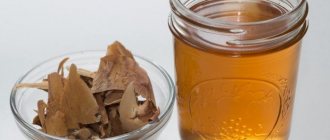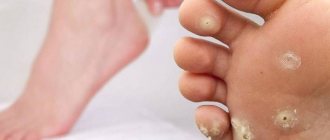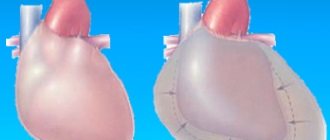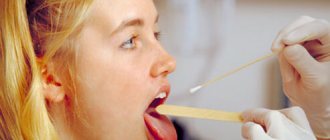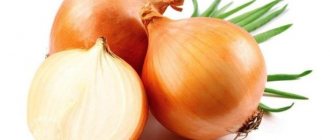Oak bark structure
A tree-like plant, pedunculate oak is used not only as a building material. It is an excellent animal feed and a tannin in light industry. In the food industry, a coffee surrogate is made from it. Traditional medicine recipes suggest using it as an antiseptic and anti-inflammatory agent.
The bark contains tannins and organic acids. Contains flavone compounds, phlobafen. It contains pectin, sugar and pentosan. Oak acorn fruits are rich in starch, protein compounds, and vegetable oils.
Tannin compounds act on pathogenic organisms, disrupting their nutrition. Together with human proteins, they create a protective film. This protects tissues from harmful microflora and prevents irritation. In turn, flavonoids have an antioxidant effect.
Periodontitis: causes of the disease
This disease is currently under study, so the causes of its occurrence are not completely clear. Dentists name the accompanying factors that usually lead to the appearance of periodontal disease. This:
- Heredity
- Treatment of periodontitis
- Decreased general and local immunity
- Vascular atherosclerosis
- Gastrointestinal problems
- Diabetes mellitus, other endocrine, somatic or infectious diseases
- Change in body reactivity
- Injuries, dental diseases
- Hypovitaminosis
- Problems in the functioning of the endocrine glands
- Plaque or tartar
- Poor quality dental treatment or prosthetics
- Various bite problems
- Poor oral hygiene
- Smoking, alcoholism
- Neurological problems
- Unbalanced diet, strict diets
Causes of the disease
Most dentists agree that the most significant and main reason for the formation of periodontitis is a lack of vitamins in the human body, especially a lack of vitamin C. In addition, periodontal disease can be affected by an excessive amount of pathogens in the oral cavity.
Microorganisms form a colorless film behind the teeth, which in the language of dentists is called dental plaque. You can easily get rid of it with a regular toothbrush or dental floss, but if you don’t brush your teeth regularly, this plaque begins to gradually turn into tartar. You will not be able to remove it yourself; to do this, you will have to visit a dental clinic, where the stone will be removed using a special hygienic tooth brushing.
When to use
In folk medicine, oak bark as a medicine has a wide range of uses. It is used as an adjunct to drug treatment. Oak bark products are especially indicated for diseases of the oral cavity:
- gum burns;
- stomatitis;
- toothache;
- periodontitis, periodontal disease;
- acute and chronic gingivitis;
- flux.
Most often, oak bark is used to prepare a decoction. Used as rinses to strengthen gums, eliminate bad breath, and also for diseases of the ENT organs.
Lotions are used to treat burns, wounds, and inflammatory skin diseases. Oak bark helps with sweaty feet and hair loss. Widely used to treat female diseases. The decoction is used internally for diarrhea, dysbacteriosis, and hemorrhoidal bleeding.
Reviews
Irina: I heard that oak bark is good for the intestines and stomach, but I myself actively use it to treat gums. I’ve had them painfully since childhood; when I treat my teeth, I always get stomatitis or irritation. 3-5 days of rinsing with oak bark decoction, and everything gets better.
In pharmacies, oak bark is presented by different manufacturers.
Vera: I sometimes treat a runny nose with an alcohol tincture of oak bark, and it goes away pretty quickly. I know that oak raw materials also help quite well as a remedy against bedsores.
Victor: Probably many people know that there are many folk recipes for male potency. As a person actively interested in herbal medicine, I can say that oak bark (I studied the composition) can really be useful. Just take and compare the chemical compositions in different recipes, and then see what should be in this or that product. Don't follow recipes blindly, think, analyze.
What are the benefits of oak bark?
The bark has been known as a medicinal plant for hundreds of years. Thanks to its valuable chemical composition, the plant has many beneficial properties.
- Tannins have an anti-inflammatory effect.
- Antimicrobial. A natural antiseptic inhibits the growth and reproduction of bacteria, promotes their death, and has an anthelmintic effect.
- Painkiller. Tannin penetrates into the intercellular fluid and weakens the perception of sensitive nerve endings.
- Hemostatic. Tannins promote better blood clotting.
- Wound healing. Accelerates tissue regeneration, promotes damage restoration.
- Decongestant. Relieves swelling, reduces allergic reactions.
In addition, the bark contains trace elements, such as calcium, which is necessary for teeth and gums.
Patient Actions
This disease often occurs without pronounced symptoms, so it is important to visit the dentist twice a year for preventive purposes. This will help to identify this problem in a timely manner or avoid it. You should consult a doctor immediately if you experience pain or discomfort in your teeth or mouth.
Only a doctor can make an accurate diagnosis and prescribe appropriate treatment. At home, you can use traditional methods for the prevention and treatment of periodontal disease. Healing infusions and decoctions based on medicinal herbs disinfect, restore local immunity, help reduce unpleasant symptoms, and slow down the development of the disease.
Terms of use
The bark is mainly used for external purposes. Decoctions, infusions and tinctures are made from it, and ointments are prepared. It does not release useful substances well, so to make a decoction, the bark is kept in a water bath in a closed glass jar for 30–50 minutes, or boiled in an enamel bowl over low heat for 15 minutes. The raw materials are immediately filtered and, if necessary, water is added to the original volume.
Decoction of oak bark in a water bath
The rinse should be at room temperature. You can store it for a day in the refrigerator, warm it up a little before using. If the decoction is too concentrated and leaves an unpleasant aftertaste, you can rinse your mouth with boiled water at the end of the procedure.
It is important to remember that the course of treatment with such drugs should not exceed 2 weeks. If it is necessary to extend treatment, consultation with a doctor is required.
For gums
For an inflammatory process, prepare a decoction of 2 tbsp. spoons of bark and 2 cups of boiling water. Rinse your mouth every two hours. Duration of treatment is up to a week. For greater effect, you can add 1 part of chamomile or linden flowers to 2 parts of the bark. The herbal infusion is prepared in a separate container, infused, filtered, then mixed with a decoction of the bark.
For toothache
Grind 2 tbsp in a coffee grinder. spoons of raw materials. Pour in 200 ml of water and boil for 15 minutes. Then add the same amount of sage herb to the broth, leave until it cools and filter. Rinse the affected tooth up to 6 times a day, holding the product in the mouth for several seconds. Even if the pain becomes less, you should consult a dentist as soon as possible.
For sore throat
Since oak bark has an antimicrobial and anti-inflammatory effect, along with drug treatment, a sore throat can be gargled with oak decoction 5-6 times a day. To enhance the effect, add infusion of St. John's wort.
Tincture
For preparation, 40 g of raw material is infused in 100 ml of alcohol. For a less concentrated tincture, 2 tbsp. spoons of bark are poured with 200 ml of vodka. Prepare the product in a dark glass container, seal tightly and keep in a dark place for two weeks. The dishes are shaken every day. To rinse the gums, add 15–20 drops of the finished tincture to warm water.
Tincture of oak bark with alcohol
Ointment
It is prepared on a fat basis. It can be animal fat or vegetable oil. The bark is first crushed in a convenient way. Then steam in a minimum amount of boiling water. When it has absorbed all the liquid, mix it with the fat base. The product should be stored in the refrigerator.
To strengthen gums and teeth, crushed bark can be added to toothpaste or powder. The raw materials must first be sifted. Use with caution so as not to injure the gums and enamel.
Flux treatment
The pain from dental problems can be so severe that it is simply impossible to bear. And if gumboil has formed near the tooth, then unbearable pain is complemented by an increase in body temperature and a sharp deterioration in general well-being.
A decoction of oak bark with sage will help reduce pain from flux
A simple folk recipe - oak bark with sage leaves - will help you alleviate the condition at home. A medicinal decoction is prepared in this way. Take 4 tablespoons of crushed bark and pour a liter of boiling water over it. Then the composition is kept in a steam bath for 20 minutes. About 5 minutes before the end of cooking, add a little sage (half a teaspoon) to the bark.
Contraindications
Despite all the beneficial properties, you should not abuse the product made from oak bark. This can cause digestive upset - nausea, vomiting, diarrhea. Possible stomach or intestinal bleeding. Prolonged use of mouthwash may cause darkening of the enamel. Products prepared from oak bark are contraindicated for use:
- with individual intolerance;
- children under two years old;
- older children, for external use only;
- Pregnant and breastfeeding women should not take orally;
- patients with intestinal disorders;
- for constipation and hemorrhoids.
The product has a fixing effect. It is important to understand that prolonged diarrhea is the cause of a serious and severe illness. Oak bark can aggravate a person's condition.
In case of overdose or exceeding the course of treatment, a disturbance of smell and taste develops.
What to do if the flux breaks?
Now about measures that are contraindicated for periostitis of the jaw.
- A purulent formation cannot be punctured. Firstly, a needle can be pierced into unaffected tissue, and then the infection will spread even further. Secondly, the punctured hole may not be enough to allow the pus to escape.
- Warming compresses. Heat provokes the proliferation of pathogenic microorganisms and increases inflammation. That is why warming compresses, tight bandages, and wrapping with a woolen scarf are prohibited.
- Taking anti-inflammatory drugs, antibiotics and other medications. Tablets are prescribed only by a doctor.
If the flux breaks through, it is important to disinfect the resulting wound. Prepare a soda solution (at the rate of a teaspoon of powder per glass of water) and rinse your mouth with it as often as possible.
No one canceled a trip to the doctor. Yes, after the breakthrough the patient feels much better, the fever goes away, the pain becomes less pronounced, but it’s too early to rejoice. The pus could remain in the deeper layers of the gum, which means that after healing the inflammation will form again. And the second time the consequences may be more severe.

